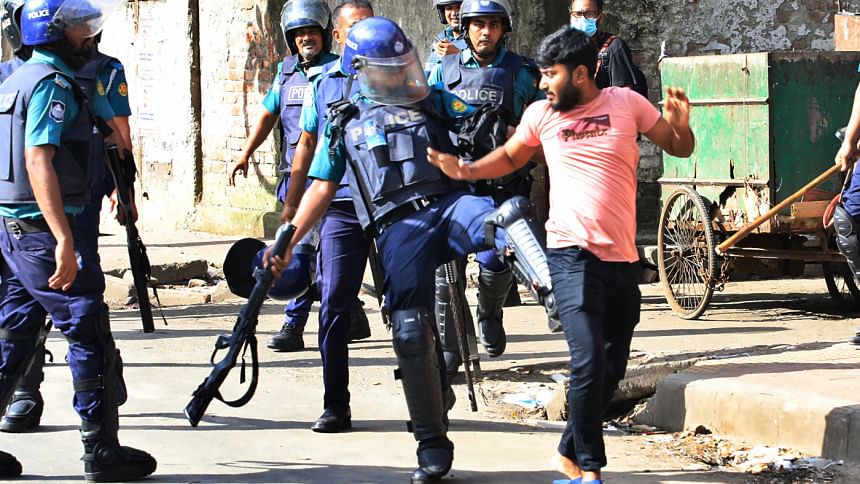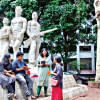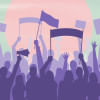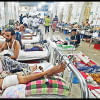Holding to account the perpetrators of crimes against protesters

"It was the henchmen of the ruling party and the law enforcement who committed the crimes, but we (the students) are the ones who are being picked up." — Tasneem Tanha, a protester.
The above statement succinctly captures the feeling of student protestors about the role of law enforcement agencies in committing the infamous July massacre, and what was then done in its aftermath. While electronic media lost no time in repeating the government's carefully crafted narrative to divert people's attention from mindless killings to the damaging of state properties and the much-coveted symbols of development of the ruling regime, leading dailies were able to deliver updates and analysis on grievous state crimes unleashed on them.
It was only after the withdrawal of restrictions on internet services that the extent and magnitude of such wrongdoings began to unravel. Graphic video footage of wanton violence committed by the law enforcers on unarmed young protestors triggered outrage. The display of the government's might through use of armoured personnel carriers and helicopters, new kits in the arsenal of "law enforcement," further added to the trauma of the people. For the citizenry, by now habituated with social media offering them real time information and alternative perspectives, the internet blockade was stifling.
The number of those killed, injured or abducted by law enforcement grew with each passing day. The number of dead and maimed patients in the medical facilities began to swell. Some facilities (including renowned ones) refused to admit patients with gunshot wounds for fear of reprisal from the authorities. There are also allegations that law enforcers seized death registers from public hospitals. The families' inability to track their lost members further contributed to the tense situation. Reports of police engaging in extortion from families of those detained caused further fury.
The move to diffuse the quota movement through the Appellate Division verdict failed to assuage the agitating students. By then, the situation deteriorated sharply as incidents of killing, involuntary disappearance, and incarceration of protestors became rampant. The abuse of those while under arrest and in detention, particularly the female students, further incensed the people. All these prompted the protestors to make additional demands including that of accountability.
The curfew and the imposition of restrictions on assembly had very little impact on the students. The unprecedented participation of private university students, otherwise perceived as privileged, provided it a fresh stimulus. The agitating students were able to garner the support of not only their peers, parents, and loved ones, but also that of ordinary working people who were appalled by the brutality unleashed on the protesters. The reckless statements of the senior-most functionaries of the government and the intellectuals who support their narrative—who have continued to blame the nebulous "third party" for "the violence"—have hardly resonated with ordinary citizens.
Figures from Prothom Alo inform that until August 1, at least 212 persons were killed in the July mayhem. An analysis of 175 cases reveals that more than 91 percent of the fatalities were caused by firearms (78 percent killed by lethal weapons and 13 percent by shotguns. The other nine percent succumbed to beating, arson or drowned). It also establishes that around 71 percent of the 175 killed were under the age of 29, 17 percent were between 30 and 39 and the rest were above 40.
So far, through their collective leadership and creative and methodical planning, the Students' Movement against Discrimination has been able to maintain the momentum. Even in the absence of the top leadership who remained wrongfully detained for about a week in the Detective Branch office in Dhaka, events such as "march for justice" and "rally of defiance," initiated by a different group of coordinators, became hugely popular. Despite on-the-spot rounding up of protestors and attempts of disruption by the baton wielding police force, university teachers, lawyers, cultural activists, and people of all strata, including the garments workers, have joined the students and extended their support for the demand of accountability and justice.
As this movement scales new heights with each passing day amid spontaneous support of the people, the government's ploy to hide behind the "third party" theory has failed to harvest any takers. The huge success of the red e-poster movement expressing solidarity with the protestors on social media on the very day that the government declared as a day of mourning is a testimony of the volume of support that the protestors enjoy over the beleaguered regime.
The July massacre has brought the credibility of this regime into question. While there is overpowering evidence, corroborated by Amnesty International, that Abu Sayeed of Begum Rokeya University was sprayed with pellets fired by the police, the police in the first information report (FIR) claimed that he died of bullets fired and brickbats flung by the protesters, and a 16-year-old had been blamed for the act. Completely denying the responsibility for shooting unarmed protesters, the government now maintains that the law enforcement agencies did not resort to firearms as they were not granted the permission to do so. This is an egregious distortion of facts.
On July 20, the general secretary of the Awami League, also a minister, while announcing the decision to impose nationwide curfew and deploy armed forces after a meeting with 14-party alliance members, categorically stated that "shoot-on-sight" order has been issued. The state minister in charge of information is on record boasting that the government had five-year supplies of bullets to quell the protest.
Such blatant misrepresentation of facts by the government makes it imperative that a thorough, credible and transparent investigation into the crimes committed by government forces, including killings, injuries, torture and abductions, and denial of the rights to express, assemble and pursue artistic freedom by the citizens, be conducted by an independent body. The youth of Bangladesh—along with ordinary masses—strive, aspire, and have remained on the streets to hold the rulers to account. Surely history will not disappoint them.
Dr CR Abrar is an academic with an interest in human rights issues.
Views expressed in this article are the author's own.
Follow The Daily Star Opinion on Facebook for the latest opinions, commentaries and analyses by experts and professionals. To contribute your article or letter to The Daily Star Opinion, see our guidelines for submission.

 For all latest news, follow The Daily Star's Google News channel.
For all latest news, follow The Daily Star's Google News channel. 











Comments